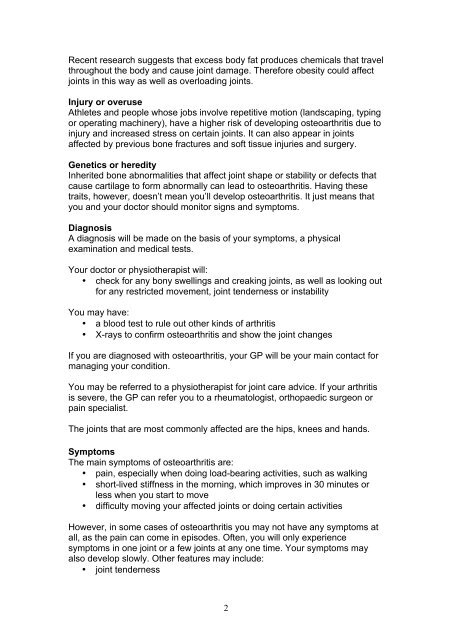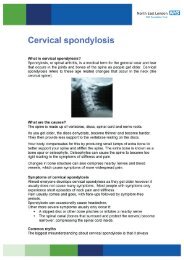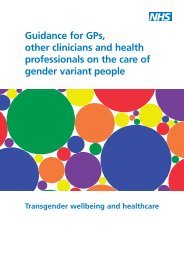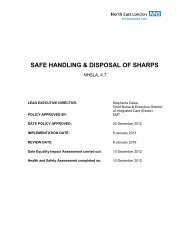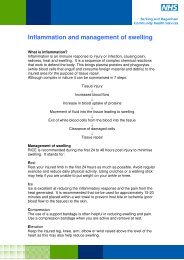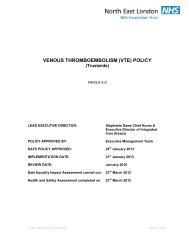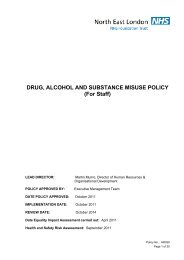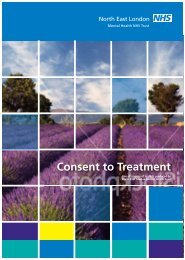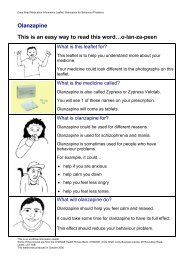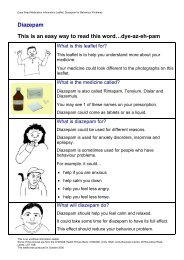Osteoarthritis information leaflet
Osteoarthritis information leaflet
Osteoarthritis information leaflet
Create successful ePaper yourself
Turn your PDF publications into a flip-book with our unique Google optimized e-Paper software.
Recent research suggests that excess body fat produces chemicals that travel<br />
throughout the body and cause joint damage. Therefore obesity could affect<br />
joints in this way as well as overloading joints.<br />
Injury or overuse<br />
Athletes and people whose jobs involve repetitive motion (landscaping, typing<br />
or operating machinery), have a higher risk of developing osteoarthritis due to<br />
injury and increased stress on certain joints. It can also appear in joints<br />
affected by previous bone fractures and soft tissue injuries and surgery.<br />
Genetics or heredity<br />
Inherited bone abnormalities that affect joint shape or stability or defects that<br />
cause cartilage to form abnormally can lead to osteoarthritis. Having these<br />
traits, however, doesn’t mean you’ll develop osteoarthritis. It just means that<br />
you and your doctor should monitor signs and symptoms.<br />
Diagnosis<br />
A diagnosis will be made on the basis of your symptoms, a physical<br />
examination and medical tests.<br />
Your doctor or physiotherapist will:<br />
• check for any bony swellings and creaking joints, as well as looking out<br />
for any restricted movement, joint tenderness or instability<br />
You may have:<br />
• a blood test to rule out other kinds of arthritis<br />
• X-rays to confirm osteoarthritis and show the joint changes<br />
If you are diagnosed with osteoarthritis, your GP will be your main contact for<br />
managing your condition.<br />
You may be referred to a physiotherapist for joint care advice. If your arthritis<br />
is severe, the GP can refer you to a rheumatologist, orthopaedic surgeon or<br />
pain specialist.<br />
The joints that are most commonly affected are the hips, knees and hands.<br />
Symptoms<br />
The main symptoms of osteoarthritis are:<br />
• pain, especially when doing load-bearing activities, such as walking<br />
• short-lived stiffness in the morning, which improves in 30 minutes or<br />
less when you start to move<br />
• difficulty moving your affected joints or doing certain activities<br />
However, in some cases of osteoarthritis you may not have any symptoms at<br />
all, as the pain can come in episodes. Often, you will only experience<br />
symptoms in one joint or a few joints at any one time. Your symptoms may<br />
also develop slowly. Other features may include:<br />
• joint tenderness<br />
2


